Everyone agrees that the Middle East is in crisis, but the diagnoses of the problems—and the resulting remedies—are hotly disputed. Exact parallels are always lacking, writes Dan Byman, but different historical analogies offer insights into the region’s myriad problems and their implications for the United States. This post originally appeared on Lawfare.
We Americans have our disagreements, but at least we can agree on the year. In the Middle East, however, analysts of the region’s many ills can’t even decide what year it is. The argument isn’t a function of the Muslim or Jewish calendars. It’s a function of analysts’ tendency to argue by historical analogy, and the choices of analogy are flying fast and furious. Everyone agrees that the Middle East is in crisis, but the diagnoses of the problems—and the resulting remedies—are hotly disputed. Exact parallels are always lacking, as both technology and society constantly change, but different historical analogies offer insights into the region’s myriad problems and their implications for the United States.
The earliest, and perhaps most depressing, era the Middle East might be in is somewhere between 1618 and 1648. The Council on Foreign Relations’s Richard Haass depicts a Middle East version of the Thirty Years War, which roiled Europe and led to the deaths of millions. Unfortunately, this comparison holds up pretty well: just as European Protestants and Catholics sparred over who represented Christianity, Sunni and Shiite Muslims in the Middle East today are fighting over which community best represents Islam. And as in Europe, religious minorities that do not fall neatly on either side (think Anabaptists then or Yazidis now) are sucked into the fray or even victimized by both sides. New communications technologies—then the printing press, now social media—are inflaming public passions and polarizing once harmonious communities. Instead of spreading brotherhood or, at the very least, pictures of cats, they spew sectarian vitriol and encourage fighters’ belief in the holiness of their cause. Perhaps most tellingly, great powers are manipulating the violence, exploiting religious logics to coldly advance their national interest. The most notable case in 17th-century Europe was France, while in the Middle East today, Riyadh and Tehran exploit popular passions to advance their countries’ strategic interests.
Another grim vision is Europe in 1848. In that year, the French people, shouting slogans of liberty, rebelled against the monarchy and established the Second Republic. This in turn inspired a “Spring of Nations” elsewhere in Europe, in which vaguely democratic and strongly nationalist forces—what we’d call today civil society and non-state actors—pushed against the old order in places as diverse as Denmark, Germany, and Hungary. Yet the Spring of Nations, like the Arab Spring, quickly turned to winter, and the old order came back with a vengeance. In France, the King played on divisions among the republicans to pull off a coup in 1851 and restore the monarchy. In Hungary, the Russian and Austrian armies brutally suppressed the revolt. As historian A.J.P. Taylor contended, “history reached a turning point and failed to turn.”
In the Middle East, democratic fervor seemed to spread rapidly in 2011, with the unrest spreading from Tunisia to Egypt, Bahrain, Libya, Syria, and Yemen, among other countries. But the flame was quickly extinguished. General Abdel Fatah el-Sissi exploited growing disenchantment with the Islamist government that took power in Egypt, executing a coup that restored the old order. The Saudi government intervened militarily in Bahrain to help the government suppress the revolt there, and has provided financial backing to conservative forces around the region. Looking at the region five years later, everywhere except the lone bright spot in Tunisia and the unfinished contests in Syria and Libya, the old order has successfully reasserted itself.
As we move forward in history, a new problem arises: colonialism and its legacy. Britain and France drew up the map of the modern Middle East to suit their interests, not the wishes of the peoples of the region. The so-called Sykes-Picot agreement of 1916, named after the British and French foreign ministers who secretly carved up the region, is often used as shorthand for this division (even though, technically, the modern borders emerged from agreements made several years later).
Deals made by foreigners in smoke-filled backrooms have a bitter legacy in the region. Syria is a failed state, Libya and Yemen are close behind, and Iraq is heading in the wrong direction. The Kurds among others may seek their own state—they are the most prominent, but not the only, example of where national and communal borders don’t match those of the region’s states. However, as Marina Ottaway of the Carnegie Endowment argues, borders are not the cause of the region’s conflict but rather the legacy of decades of monolithic authoritarianism imposed over a socially and culturally diverse landscape. Yet the border issues are real, with minorities feeling oppressed in every country, while tribal and other cross-border ties weaken national identity.
These border problems would be less troubling if the governments in question enjoyed broad legitimacy. They rarely do, and their regional rivals exploit this even as their own legitimacy is exploited in turn. In the decades before the Arab Spring, Syria meddled in Iraq, Jordan, and Lebanon while constantly trying to manipulate the Palestinians. The struggle in Syria today not only involves Syrians, but also Iran, Saudi Arabia, Qatar, Turkey, and a host of other regional actors, including substate groups like the Lebanese Hezbollah. A similar scene is playing out in Yemen, where Iran, Saudi Arabia, and the UAE all are active.
This manipulation of civil strife and illegitimacy by powerful outside actors like Iran and Saudi Arabia has led some analysts to suggest a return to the 1950s Arab Cold War. In the 1950s and 1960s, Egypt’s Gamal Abdel Nasser led a bloc of so-called republics that challenged the legitimacy of Saudi Arabia and the other monarchies, leading to bitter clashes behind a façade of anti-Israel unity—the so-called Arab Cold War. In Yemen, Egypt deployed troops to fight a Saudi-backed government, and the regimes vied for influence in Syria, Jordan, and other countries. Sectarianism is driving much of this rivalry today, with Saudi Arabia championing the Sunnis and Iran cast as the defender of Shiites. And now even the façade of focusing on Israel is fading.
These historical analogies are all dismal ones, but there is one positive image floating out there: the release of Eastern European states from authoritarian shackles in 1989. President Obama, among others, has hailed the Eastern European shift from totalitarianism to democracy as a model for the Arab spring. Even several years after the collapse of revolutions, some observers are noting the role of youths and other encouraging factors as reasons to think that the long-term impact of the movements may still be positive. The Middle East is in crisis, but the 2011 revolutions show that the wishes of the people cannot always be ignored.
We know none of these analogies is perfect, but they all raise factors to consider while pondering the Middle East’s future.
We know none of these analogies is perfect, but they all raise factors to consider while pondering the Middle East’s future. As the United States considers its future in the region, policymakers should keep in mind the one unifying theme of all the analogies: chaos and contingency dominate the Middle East today. In none of the years above did the actors necessarily foresee where their actions would lead. Even an event as monumental as the fall of the Berlin Wall occurred in part by accident, with a local commander not fully understanding instructions, turning a controlled opening into a riot of freedom.
Another commonality of note is the role of regional states and governments, even as we confront the rise of non-state actors. Regional states often drive conflict, either by inflaming passions as Saudi Arabia and Iran are doing today or using their militaries to roll back political movements they oppose. In an age of state collapse and non-state actors like Hezbollah and the Islamic State, governments still matter.
The major determinant of relations between the region’s states, however, is internal. Even countries like Saudi Arabia are driven in part by anti-Shiite sentiment at home and the regime’s fears of illegitimacy stemming from the 2011 revolutions. For weaker regimes, challenged by a potent combination of non-state actors, meddling neighbors, and ordinary people seeking a better life, their focus is simply surviving through the year.
Ironically, weak allies limit U.S. power as much, if not more, than strong ones do. Many allied regimes simply cannot do what the United States wishes. At times this is due to incapacity (can the Libyan government the United States recognizes really crack down on terrorism when it doesn’t fully control its own capital?), but often the weakness is political. Embracing an unpopular policy such as stemming support for extremism or closing a border is politically difficult and made especially so if there is open U.S. pressure. So as the Obama administration prepares to enter the history books, its successor will face a muddled, conflicted, and chaotic Middle East. When the next U.S. president assumes office in January, it probably won’t be 2017 in the Middle East either.

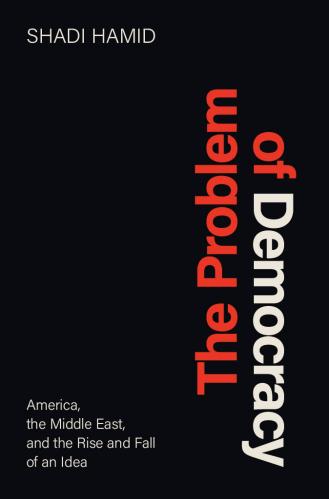
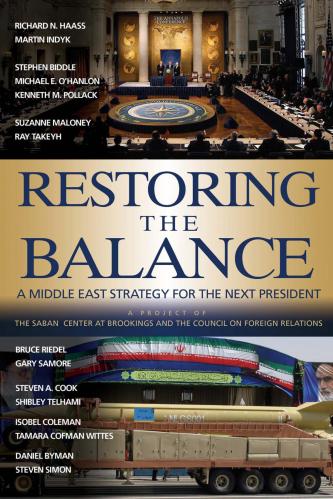
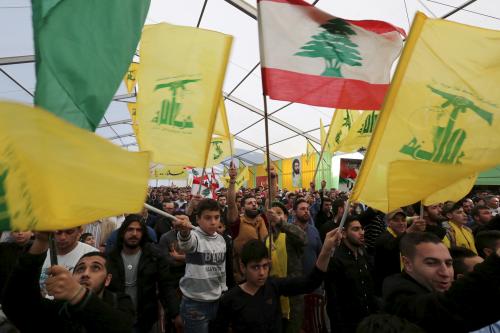
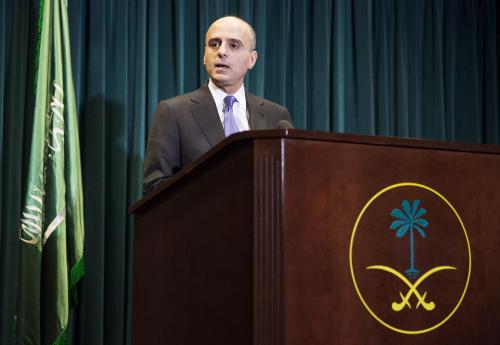
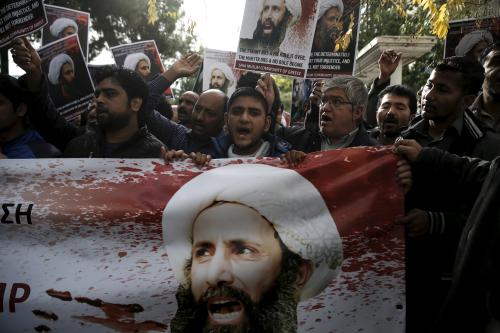



Commentary
What year is it in the Middle East?
October 5, 2016